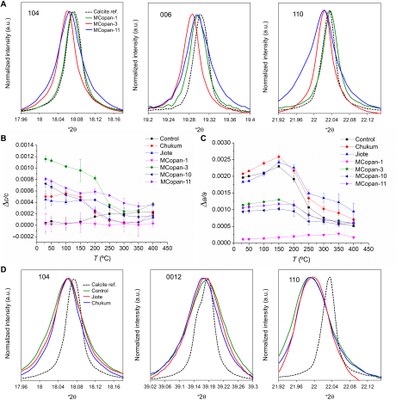Do you want to keep up to date? Subscribe to our newsletter. 1 mail every 2 months! |
 |

Maya site of Copán (Honduras). On the left, image of the ruins where the "Rosalila" structure is located, the best example of a complete classical temple in the Mayan area whose surface is decorated with pink lime plaster and stucco masks (right).
Cerdanyola del Vallès, 26th April 2023 A research group from the University of Granada has discovered the secret of the ancient Maya masons, who produced lime mortars and stuccoes of extraordinary durability: plasters with plant extracts.
Scientists analyzed the materials used to build the Maya site of Copán, in Honduras. The ruins of this Maya city built between the 4th and 9th centuries were declared World Heritage Site by UNESCO in 1980.
Despite the multiple studies carried out on these construction materials, "until now it was not known why the monuments built by the Mayans, in many cases, currently present an excellent state of conservation, in spite of having been exposed for more than a thousand years to a very aggressive tropical climate”, explains the main author of this work and professor of the Department of Mineralogy and Petrology at the UGR, Carlos Rodríguez Navarro.
Now, these materials have been analyzed with high resolution analysis techniques such as transmission electron microscopy and X-rays diffraction, at the MSPD beamline of ALBA. Synchrotron X-rays enabled to know exactly the chemical composition and structure of the materials. It has been discovered that ancient lime mortars and stuccoes include organic compounds and have a calcite crystals cement (CaCO3) with meso-to-nanostructural features matching those of calcite biominerals (for example, shells). That fact allowed the Maya masons from Copán to obtain materials with such high performance.
Researchers wanted to prove that organic compounds in lime mortars could play a hardening role similar to that of (bio)macromolecules in calcite biominerals (which have much higher mechanical strength than purely inorganic calcite), following the advice of current local masons from Copán that have inherited the construction tradition of the ancient Maya civilization from which they descend.
"To do this, we prepared replicas of lime mortars dosed with extracts rich in polysaccharides from the bark of common trees in that Maya area, such as chukum (Havardia albicans) and jiote (Bursera simaruba) -explains Rodríguez Navarro-. Our analytical results demonstrate that the replicas have similar features to those of ancient Maya mortars and stuccoes containing organic compounds. In addition, we have shown that, as in biominerals, both the historical Maya mortars and the replicas present a calcite cement that includes intercrystalline and intracrystalline organic compounds (polysaccharides) that impart to the mortar matrix a marked plastic behavior and a greater toughness and resistance to breakage, while increasing its resistance to chemical alteration, since they reduce its dissolution rate”.
Overall, these effects, similar to those that allow the calcite of shells of mollusks or the spines of sea urchins to be enormously resistant, have meant that the mortars and stuccoes used in the constructions of the ancient Maya civilization have reached our days in an excellent state of preservation.
Nature as a role model
Apparently, the lime technology developed by ancient Maya, and likely other ancient civilizations that used natural organic additives to prepare lime plasters, fortuitously exploited a biomimetic route for improving carbonate binders performance.
“Finally, considering the results of our research, the use of plant extracts nowadays could help us develop new optimized and compatible lime-based mortars, plasters and stuccoes for the conservation of historical-artistic heritage and modern and sustainable construction. In addition, our results open the way to design new lime-based biomimetic binders that include natural or synthetic organic compounds with specific functionalities, or with known hardening effects, such as those of the organic compounds present in calcitic biominerals”, concludes Rodríguez Navarro.
This work, which is part of a research project in collaboration with Harvard University, the Fundación Santander, Instituto Hondureño de Antropología e Historia de Honduras, and the team from the Laboratorio de Conservación de Esculturas Maya (LACEM) from Copan (Honduras), has been published in the scientific journal Science Advances.

Powder diffraction analyzes of the lime stucco and Mayan replicas obtained at the MSDP beamline of ALBA.
Reference: Unveiling the secret of ancient Maya masons: Biomimetic lime plasters with plant extracts. Carlos Rodriguez-Navarro, Luis Monasterio-Guillot, Miguel Burgos-Ruiz, Encarnación Ruiz-Agudo, Kerstin Elert. Science Advances (2023), volumen 9, issue 16. http://www.science.org/doi/10.1126/sciadv.adf6138
Original piece of news from the Universidad de Granada




